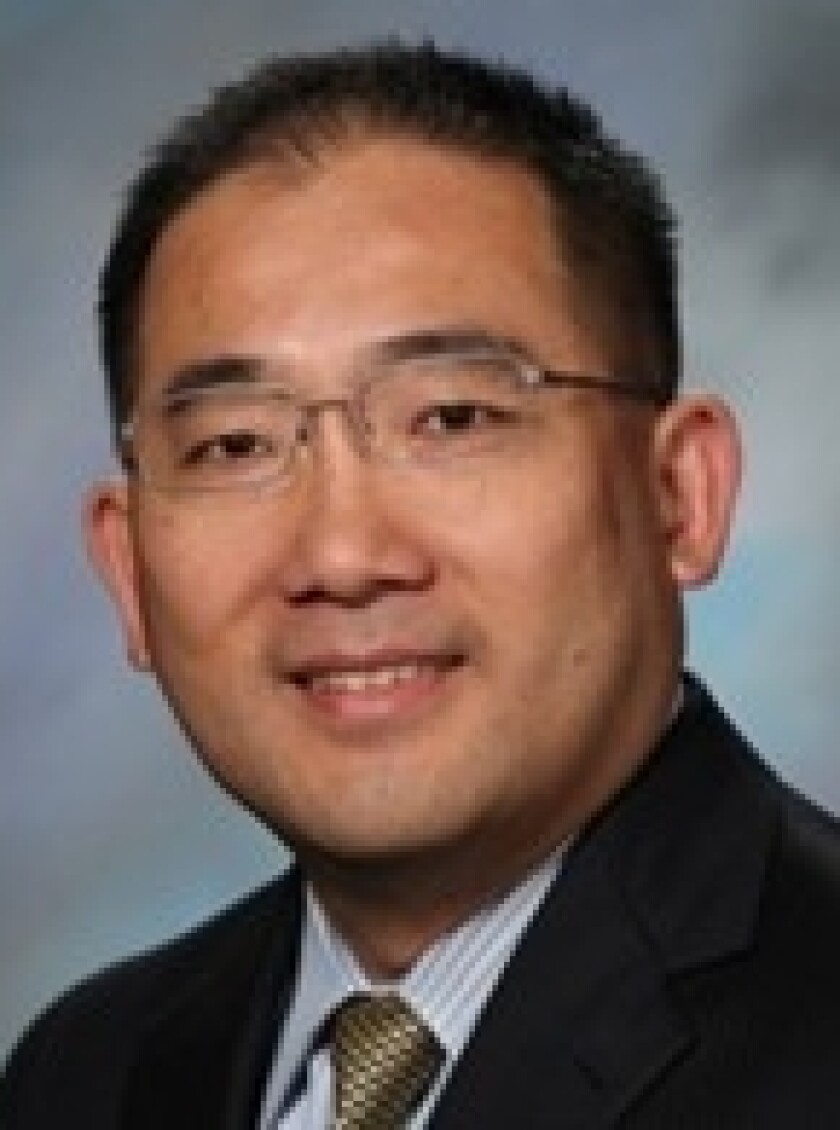The four Californians’ names are likely familiar to those working in the tech industry, and each has earned distinction for achievements in the realm of government technology. (The full roster of the Top 25 is available here.)
They are:
VINCE KELLEN
Vince Kellen is chief information officer for the University of California, San Diego. Since becoming UCSD’s CIO in 2016, Kellen has led his team in several IT modernization efforts and played a pivotal leadership role in the university’s work to create its own in-house AI tools.

“For years, we’ve [also] run a machine learning cluster to support AI for students in classes so instructors can assign students AI machine learning work in their classes,” he said. “Students can come into our AI cluster and take advantage of that and apply that in their coursework, and that’s going to continue and grow into the future.”
Before his current role, Kellen served as an IT consultant, advising Fortune 500 companies on IT strategy, customer and marketing strategies, analytics, and data management. He also previously served as the senior vice provost of analytics and technologies for the University of Kentucky and as CIO of DePaul University. He said his experience taught him how to quickly mobilize teams as well as the importance of continued professional development as technology continues to advance and IT expectations change.
“IT teams have to be flexible to adapt and quickly reorganize. … In today’s world it’s all about personal agility and organizational agility,” he said. “Expectations are ratcheting up.”
MICHAEL MAKSTMAN
Michael Makstman is chief information security officer for the city-county of San Francisco. Makstman has helped San Francisco reimagine its cybersecurity approach. When he became CISO in 2018, each department had largely handled its own cyber efforts individually, and San Francisco lacked a citywide cyber defense or response strategy. But Makstman — who’s quick to say his successes reflect a team effort — pushed for seeing cyber through the lens of emergency management. That made cybersecurity a concern for city leadership, not just for technology staff. It also emphasized a potential cyber emergency’s enterprisewide impact and the need for a central incident commander able to coordinate a unified response.

As of this writing, Makstman is also serving as interim CIO, where he similarly aims to be a facilitator and collaborator, respecting individual agencies’ different IT and cybersecurity needs and contexts while using his central position to help coordinate and bring everyone together. He also wants to support departments’ tech ideas and let them pilot innovations. As CIO, he can help bring successful experiments citywide.
Makstman also co-founded the Coalition of City CISOs. The officials charged with keeping cities safe from deep-pocketed cyber gangs, hacktivists and nation-state threat actors face intense pressures, and conversations with colleagues convinced Makstman there would be mental health benefits for CISOs if they had a peer group with others who understood their situations. The group has since grown to include even international members, and it helps share threat information, offers trainings and webinars, and leads the Public Sector Day at the annual RSA Conference. The coalition now partners with the Cybersecurity and Infrastructure Security Agency, the Center for Internet Security, state agencies, and groups like the National League of Cities and United States Conference of Mayors.
(Makstman was featured in an Industry Insider — California One-on-One interview in April.)
KRISTIN MONTGOMERY
Kristin Montgomery is chief information officer for the California Department of Corrections and Rehabilitation (CDCR). In conversation with the technology chief for the nation’s largest prison system, several words come up over and over: “team,” “success,” “customers,” “driven,” “solve” and “support.”

“It’s really about my team,” Montgomery said when asked about the key to her success. “I really lead through my teams, and my teams are the ones that are doing the job. And without them, I would not be the person that I am. We work together, we cry together, we enjoy our successes together, we fail together, we succeed together.”
Before being tapped as CDCR’s technology chief in 2021, Montgomery had been deputy director since 2018. Before that, she served as controller for the California Public Employees’ Retirement System from 2013 to 2018. She worked in the private sector before joining state government in 2013.
Building rapport and trust in a team as large as CDCR’s isn’t just about running meetings and signing off on IT contracts. So what else does Montgomery do to keep her Enterprise Information Services team productive, engaged and motivated?
“You’ve got to be really outcome-driven,” she said. “Where are we going to go? Why are we doing it? I’m not going to tell you how to get to the outcome. … It’s like a map: Some people want to take the freeway; some people want to take the side roads. I don’t care how you get there.”
But a clear mission and a transparent leader who shares the limelight aren’t enough, Montgomery acknowledged. The department, like every other part of California state government, is facing financial pressure as the state seeks to plug a multibillion-dollar budget deficit. That means departments are having to find ways to adjust to new limitations.
To that end, one might say, Montgomery has made it her mission to be a doer, a dreamer and a driver.
(Montgomery was featured in an Industry Insider — California One-on-One interview in August 2022.)
HONG SAE
Hong Sae is the chief information officer for the city of Roseville. When it comes to listing the heavy hitters of California public-sector IT, the default might be to look toward the state’s biggest cities and agencies. But if that was where you stopped looking, you’d miss the likes of Sae, a visionary leader who has extended his expertise far beyond the bounds of his own jurisdiction.

In 2010, he joined the rapidly growing city of Roseville, northeast of Sacramento, quickly moving to put people and innovation at the center of IT’s core mission.
“I joined Roseville in 2010 due to its reputation for community focus, progressive and forward thinking, and a strong commitment to technology and innovation,” he said. “Roseville allows me to focus my core mission to revolve around maximizing organizational efficiency through a keen focus on people, process and performance.”
Sae’s work there strikes the balance between excellent citizen services and technology that most residents never have a reason to consider. These include secure data systems and a strong cybersecurity stance, as well as more cutting-edge solutions, like artificial intelligence.
“Many of the technological advancements we introduce may not be immediately visible, but they significantly impact the delivery of public services,” he said. “From online portals for citizen engagement, like myRSVL — the city’s newly launched customer relationship management software — to streamlined processes that reduce bureaucracy, our work contributes to a more efficient and citizen-friendly government.”
(Sae was featured in an Industry Insider — California One-on-One interview in March 2021.)
*Government Technology is a publication of e.Republic, Industry Insider — California’s parent company.








